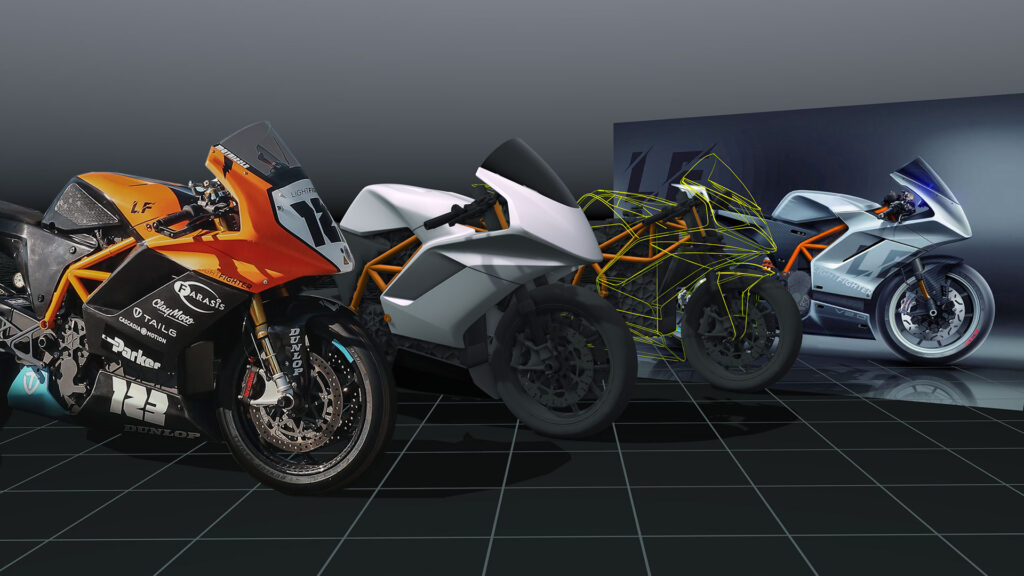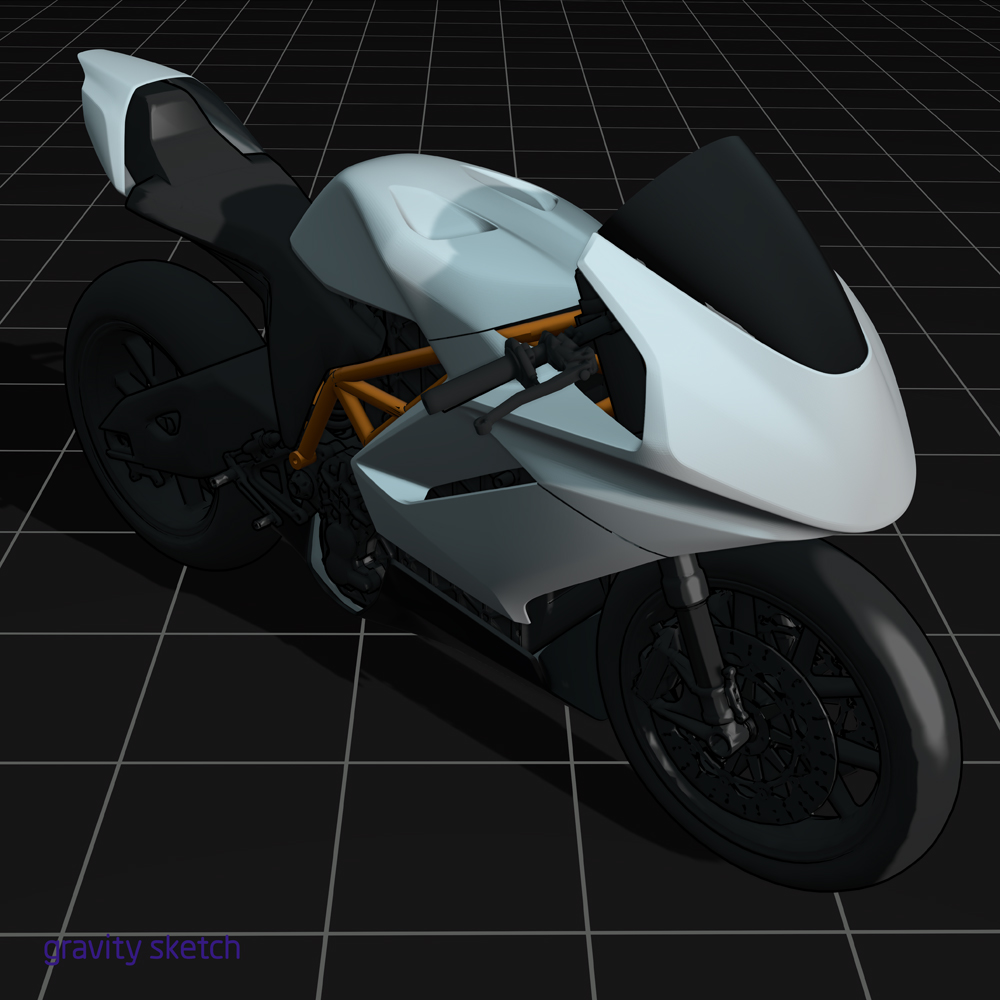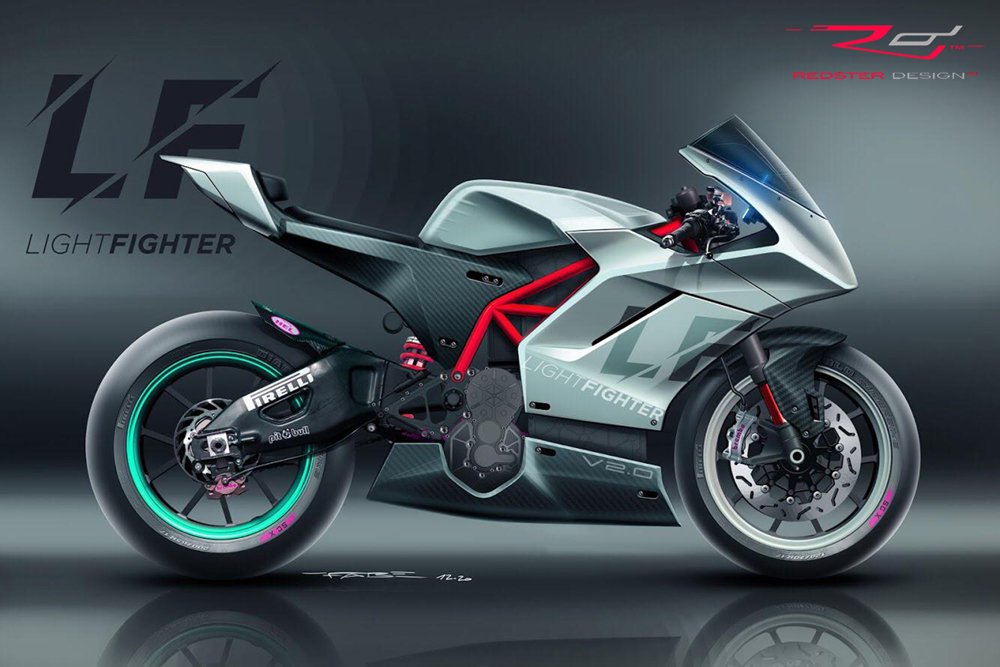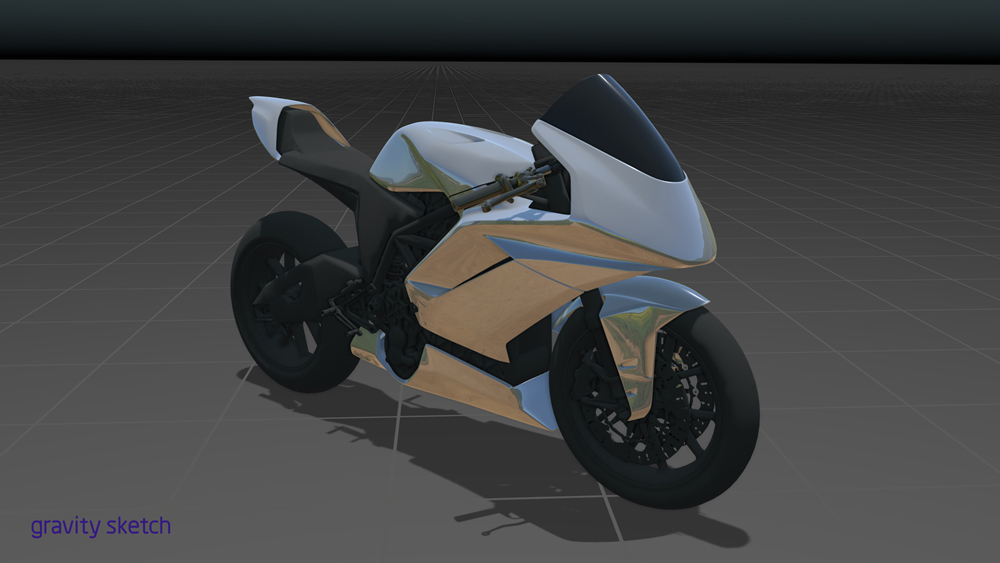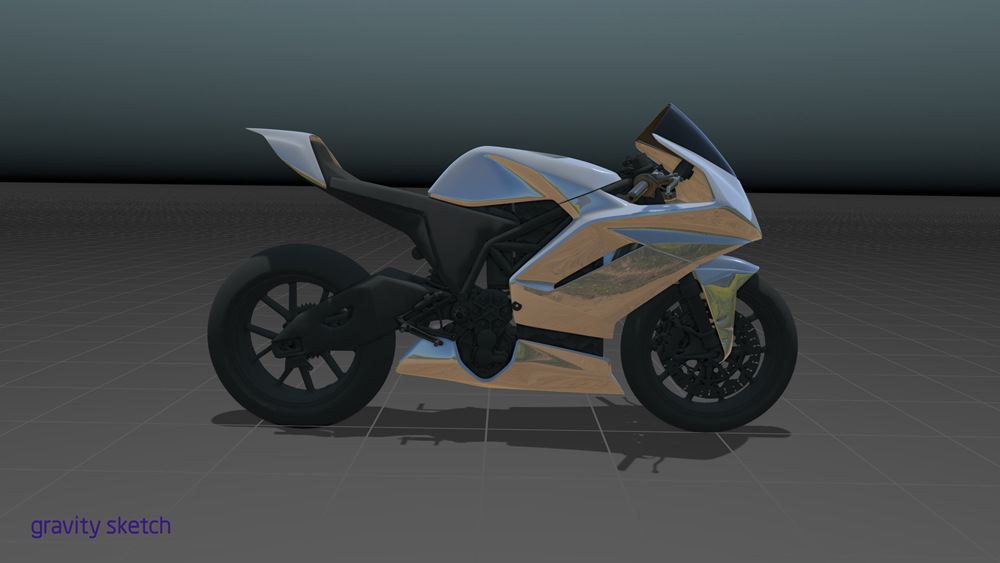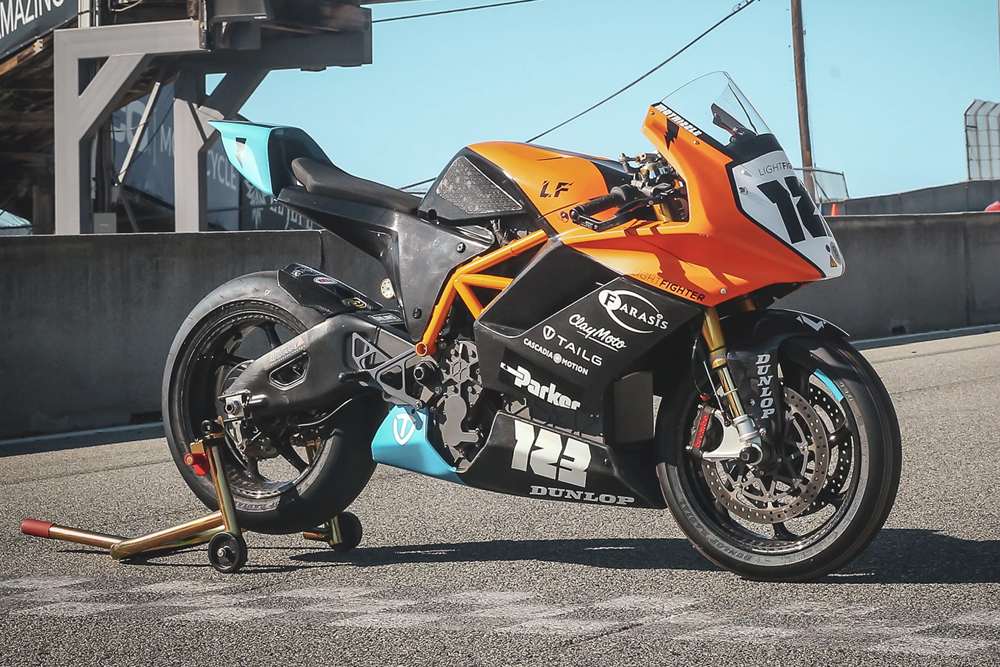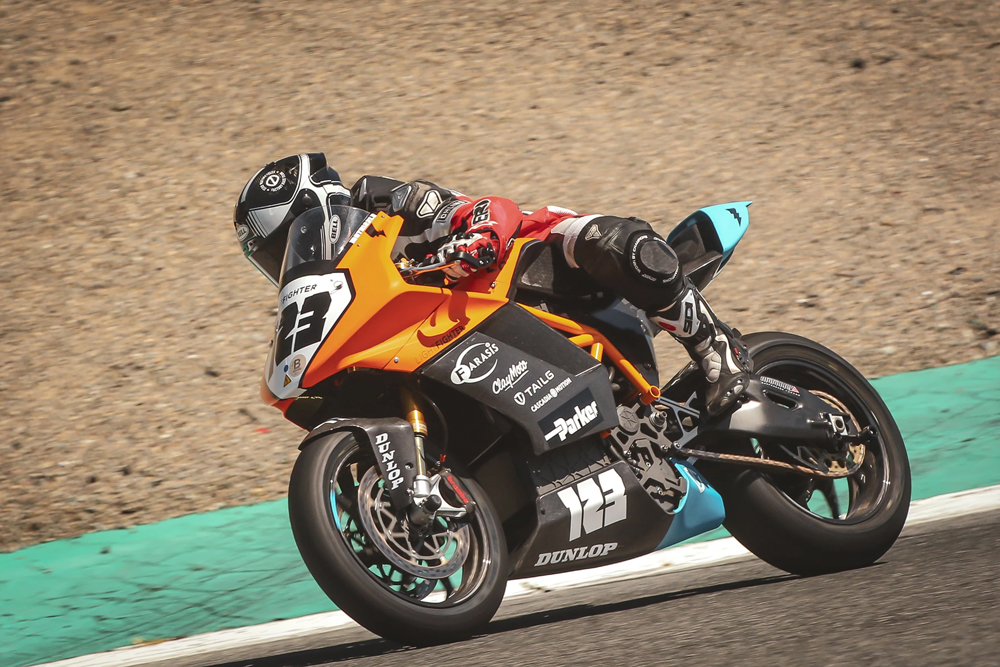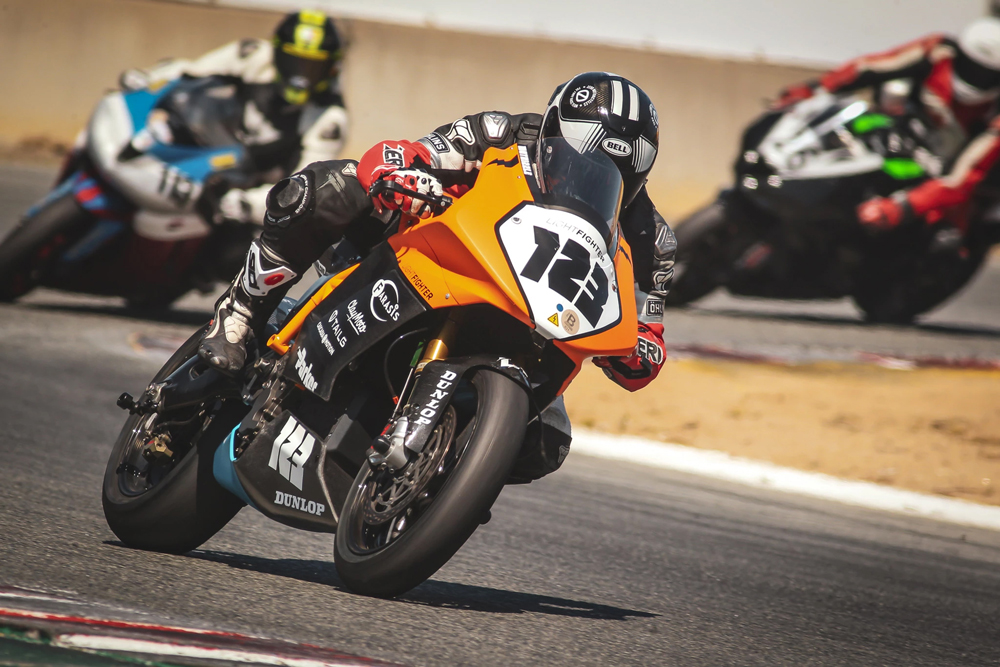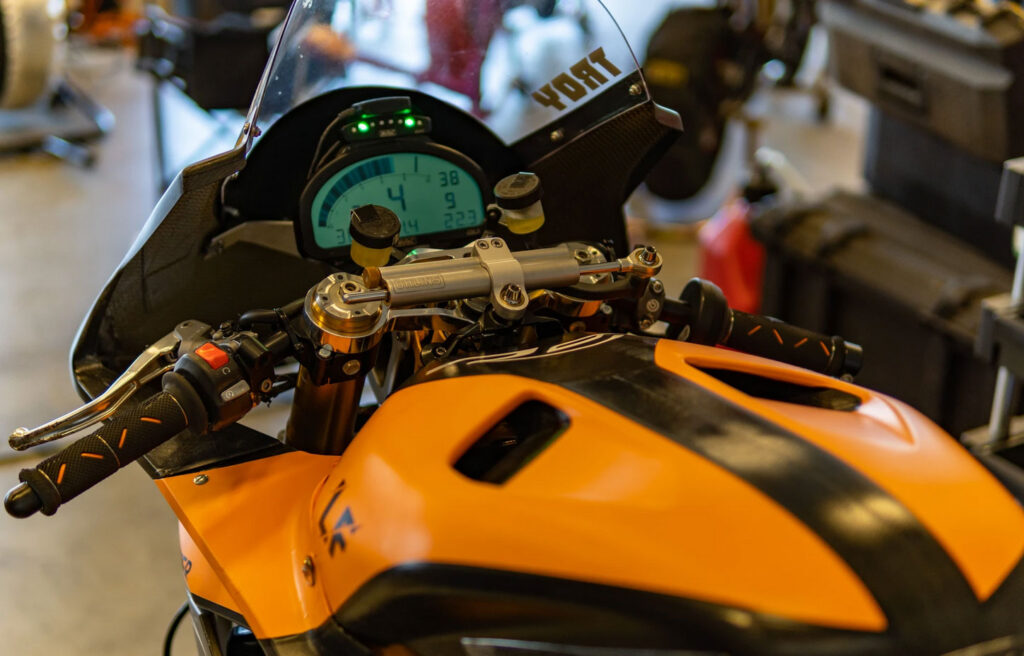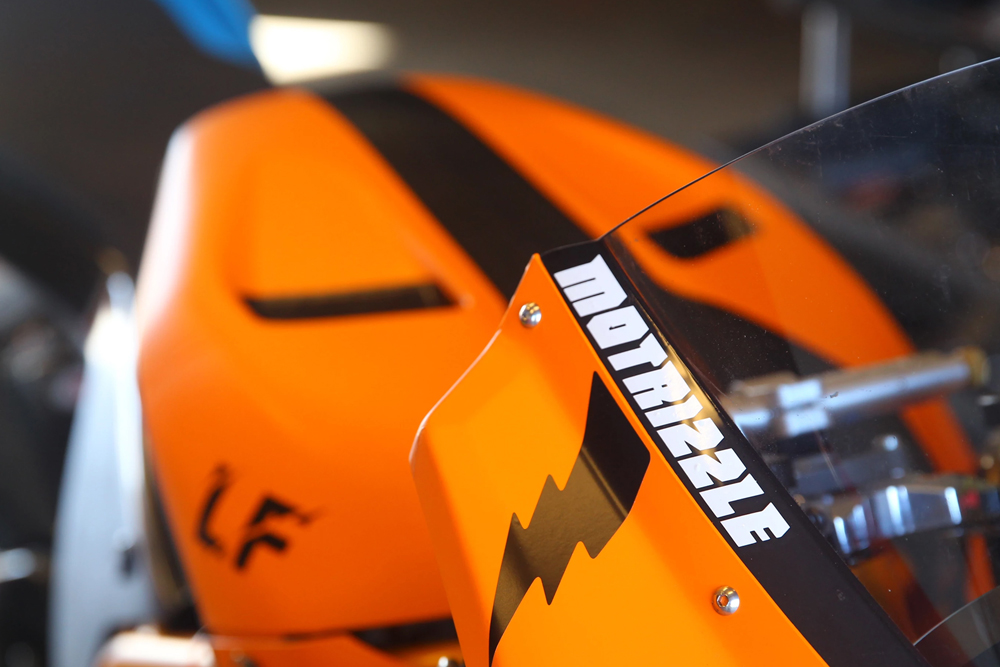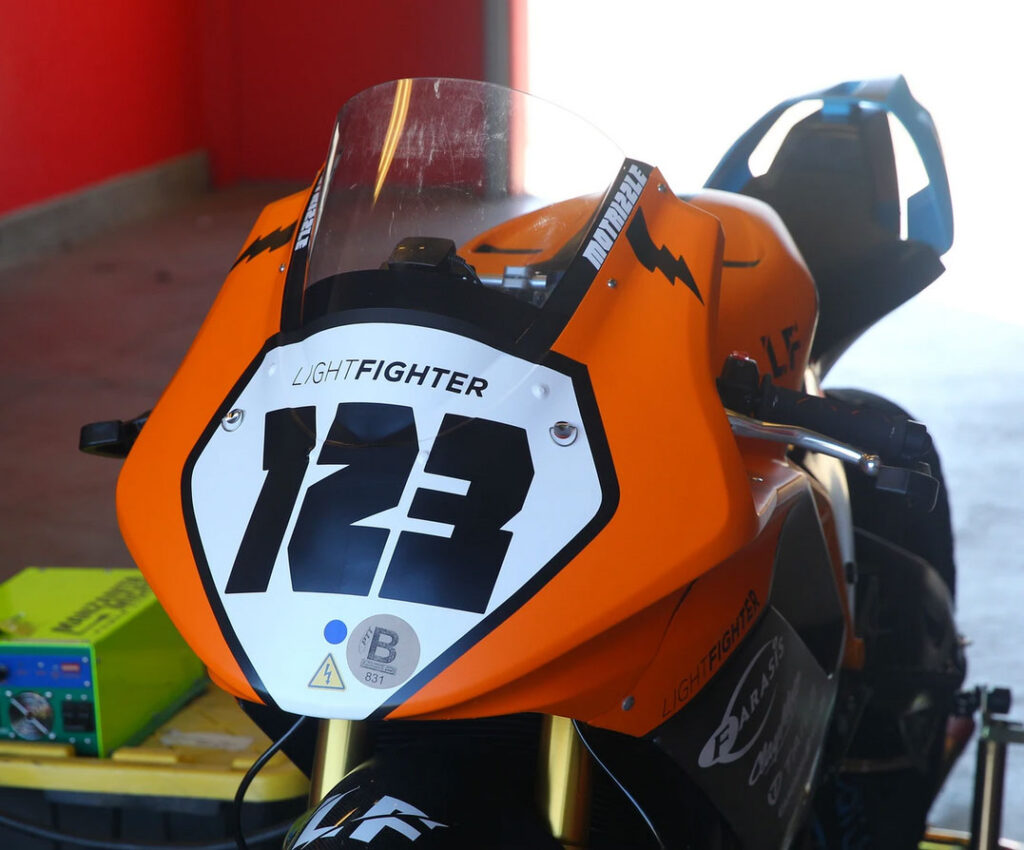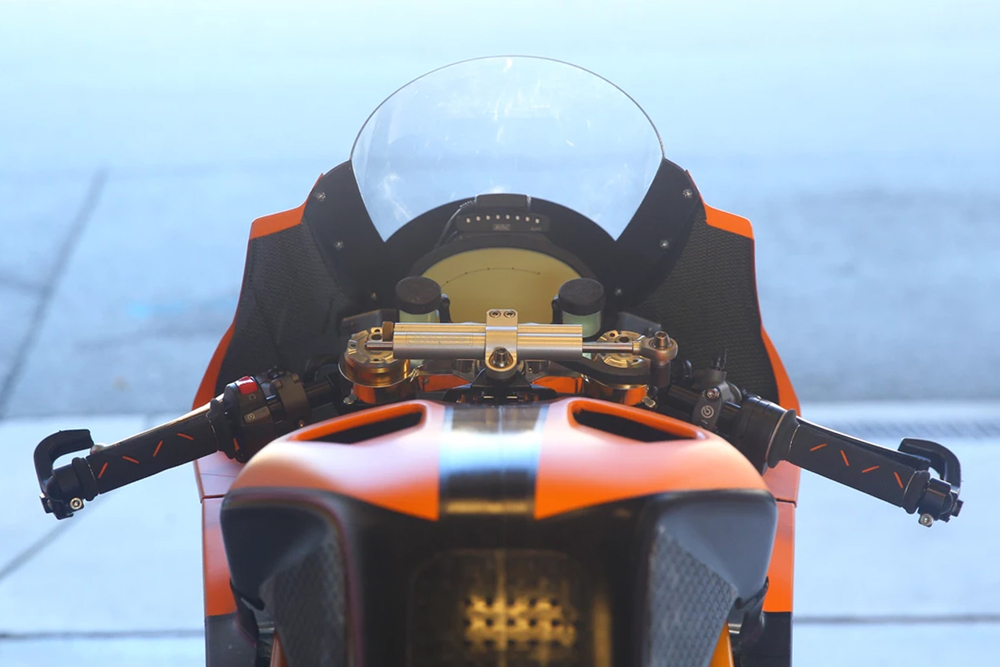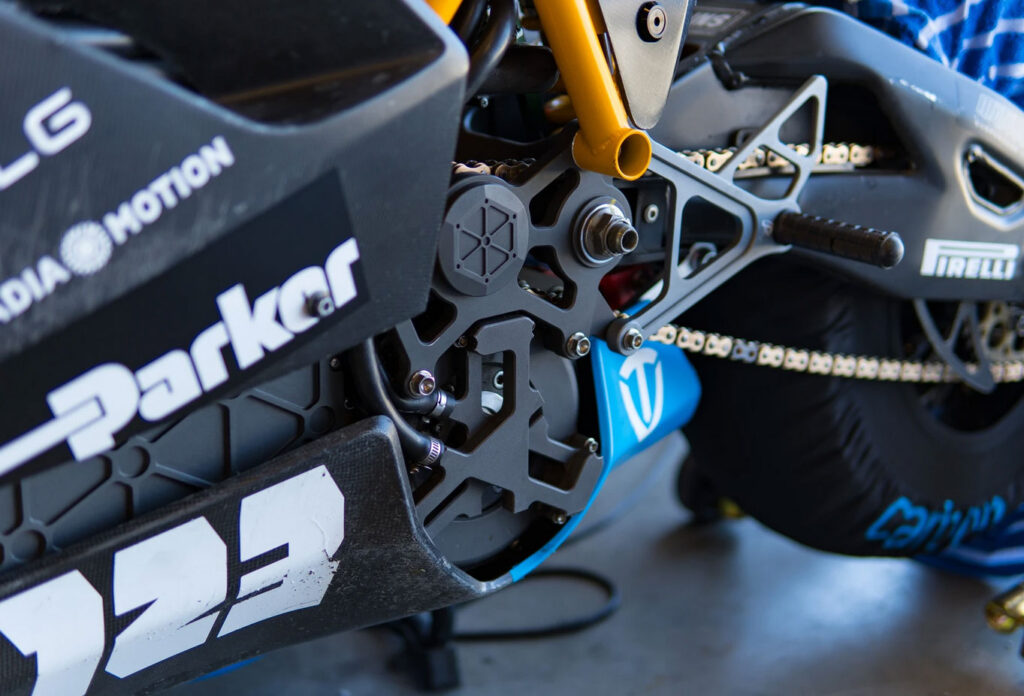- Client: Lightfighter
- Our Role: Digital Modeller
The “Lightfighter” race bike project is a passion project from Brian Wismann (day job is VP of New Product Development for Zero Motorcycles) and Ely Schless. https://www.lightfighter-racing.com/
This is one of two race bike projects that I took on in order to give me a real world project to gain experience using the “Gravity Sketch” (GS) VR modelling software. The other being the “Hypermono”.
I was lucky to rope in my friend and colleague Fabien Rougemont of Redster Design to come up with a brilliant design, as like me, he was interested to see how we could harness VR to improve the current process. We worked together off and on in our “VR studio” over several months to produce the final data.
- It proved to both of us that this is an absolutely indispensable tool. Here are some of the advantages we discovered:
- It gave us the POSSIBILITY to work together on a project (we live in different countries far apart!)
- It was digital modelling, but with all the true human perspective advantages of a real clay model. With a “zero budget” project such as this, that will not go through a clay loop, being able to model the bike in this perspective gave us real confidence to send the finished surfaces to be directly 3D printed. That would never be possible from a flat monitor digital model.
- We could import the complete engineering package and a rider mannequin, and make fully informed decisions based on the realities of the package and rider ergonomics.
- We could try many crazy design ideas without penalty, and compare them next to each other.
- Communication was incredibly easy – typically on a clay model a designer communicates with a modeller through tape lines. With GS the designer can generate design defining curves that float in mid-air, and the modeller can refine these lines in all dimensions (by looking down it with one eye like with a clay tape). The new workflow defines these curves “in the air” and you work back from these to create surfaces. Compared to clay and nurbs modelling, it removes the labour intensive need to make one good surface and then lay a tape/project a line on it before making the adjacent surface following this… then realising your first surface wasn’t quite right… so rinse and repeat. Compared to all current “flat monitor” digital modelling, being able to see in 3D and understand these curves as you would on a physical model is frankly incomparable.
- Since “the studio” was wherever our VR headset was, we could jump in for a few hours together whenever we had time, so offering us great flexibility to fit it into our otherwise busy lives.
All in all, this project was a pivotal moment in my professional career. Never again can I do a project without using the power or VR.

